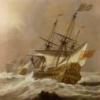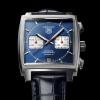-
Posts
607 -
Joined
-
Last visited
Reputation Activity
-
 Timmo reacted to freewheelinguy in HMS Bellerophon by freewheelinguy - FINISHED - Victory Models - Semi-scratchbuilt
Timmo reacted to freewheelinguy in HMS Bellerophon by freewheelinguy - FINISHED - Victory Models - Semi-scratchbuilt
Thanks for the compliments, greatly appreciated always.
Build update:
Presently have been working on the headrail and associated pieces, but while I was waiting for some bending pieces to cure I decided to build up the six carronades required for the poop deck.
When purchasing the material for this build I decided to purchase the carronades from Caldercraft. These seem to be the closest size for this scale, plus the came with the elevation screw.
Carronade assembly as follows:
1. Added breeching ring 20 gauge wire.
2. Shaped out of boxwood piece, drilled hole for mounting pin and glued to bottom of carronade.
3. Cut 1/8"dowel 1/16", drill center hole, slipped down screw, drilled two hole and glued 24 gauge wire handles.
4. Screwed onto carronade and cut screw (looking at magnified picture will cut off more, plus pic shows I need some cleanup).
5. Painted after treating brass pieces in Blacken-it. Paint used Admiralty matt (metal) black.
Carronade carriage assembly as follows:
1. Cut and shaped two platform pieces out of basswood and painted red.
2. Made nine eyelids for each carriage out of 28 gauge wire and attached.
3. Added two more eyelids and rings out of 24 gauge wire for breeching rope.
4. Made and shaped wheel assembly plates out of thin styrene, cut round toothpicks 1/8" for wheels, glued pieces and added to bottom of carriage. Initially, had an additional wood pieces on bottom as my carronade drawing showed, but when I put this on the ship was too high off the deck therefore removed and cut wheel plates in half.
5. Made the pin for the carronade out of filed down toothpick through draw plate.
6. Made the two side pin holders out of 1/8" dowel, filed bottom flat, and a strip of wood for bottom piece, glued together then drilled the hole for pin.
7. Glued carronade to carriage.
8. Made front pin plate out of thin styrene, added pin, painted black and glued to carriage.
Next up: mounting and rigging to poop deck.
Take care and if your reading this thanks for looking in.
-
 Timmo reacted to jaerschen in HMS Leopard 1790 by jaerschen - 1/64 - POB - 50 gun ship
Timmo reacted to jaerschen in HMS Leopard 1790 by jaerschen - 1/64 - POB - 50 gun ship
Hello,
after I put off my Triton build I started a new project. Now I want to build the 50-Gun Ship HMS Leopard 1790 (POB) ,1/64 scale
Therefor I bought the book The 50-Gun Ship from Rif Winfield. At this are the plans of the Leopard drawn by John McKay.
I don’t make many words about the build of the frames because that’s often described here on MSW.
Instead I show some photos.
Juergen
-
 Timmo got a reaction from Captain Slog in HM Bomb Vessel Granado 1756 by Timmo - FINISHED - Caldercraft - Scale 1:64
Timmo got a reaction from Captain Slog in HM Bomb Vessel Granado 1756 by Timmo - FINISHED - Caldercraft - Scale 1:64
The guns have etched brass trunnions caps held down with dome headed nails (right hand gun). It's effective in that it wont be coming loose any time soon but quite heavy handed for the scale. I modified the gun at left by removing the nails, using a brass pin to hold the trunnions cap on and added some retaining bolts from brass and fuse wire for some extra detail.
It's difficult to see once its all painted black and these bowchasers will be under the foc'sle but I like it better than the kit option and will take this route for the rest of the guns.
Boy, I'd forgotten how long it takes to tie gun tackle blocks. After a good four hours of fiddling and cursing the blocks were rigged. Next step gun installation. The cannon were pinned to the deck to prevent them running amok later. The kit suggests 0.25mm line for the breaching ropes. This is a barely noticeable increase in size from the .1mm training tackle ropes so I used .5mm. Could probably gone even thicker as I'm still not sure I'd want to stand anywhere near a gun restrained by these if I was 1/64th scale.
Rope coils were line brushed with dilute wood glue and rolled on a paintbrush handle, left until they hold a shape but not stuck to the handle and gently crimped with tweezers until firm. They were stuck on with the same glue and gently pushed down to give a natural fall. If done before the glue completely sets it stops them defying gravity too much and sitting upright.
-
 Timmo got a reaction from Ferit in HM Bomb Vessel Granado 1756 by Timmo - FINISHED - Caldercraft - Scale 1:64
Timmo got a reaction from Ferit in HM Bomb Vessel Granado 1756 by Timmo - FINISHED - Caldercraft - Scale 1:64
The guns have etched brass trunnions caps held down with dome headed nails (right hand gun). It's effective in that it wont be coming loose any time soon but quite heavy handed for the scale. I modified the gun at left by removing the nails, using a brass pin to hold the trunnions cap on and added some retaining bolts from brass and fuse wire for some extra detail.
It's difficult to see once its all painted black and these bowchasers will be under the foc'sle but I like it better than the kit option and will take this route for the rest of the guns.
Boy, I'd forgotten how long it takes to tie gun tackle blocks. After a good four hours of fiddling and cursing the blocks were rigged. Next step gun installation. The cannon were pinned to the deck to prevent them running amok later. The kit suggests 0.25mm line for the breaching ropes. This is a barely noticeable increase in size from the .1mm training tackle ropes so I used .5mm. Could probably gone even thicker as I'm still not sure I'd want to stand anywhere near a gun restrained by these if I was 1/64th scale.
Rope coils were line brushed with dilute wood glue and rolled on a paintbrush handle, left until they hold a shape but not stuck to the handle and gently crimped with tweezers until firm. They were stuck on with the same glue and gently pushed down to give a natural fall. If done before the glue completely sets it stops them defying gravity too much and sitting upright.
-
 Timmo reacted to Beef Wellington in HMS Snake by Beef Wellington - FINISHED - Caldercraft - Scale 1: 64 - First wooden ship build
Timmo reacted to Beef Wellington in HMS Snake by Beef Wellington - FINISHED - Caldercraft - Scale 1: 64 - First wooden ship build
Played around with the hook and strops on the block. The wire is 26 gauge and the line is 0.1mm Caldercraft hemp. I think in real life hook would protrude more, but I think it needs to be reduced a bit to allow for the short tackle length and should look OK at this scale.
-
 Timmo reacted to chris watton in Newsworthy updates from Chris Watton
Timmo reacted to chris watton in Newsworthy updates from Chris Watton
More on these nice models...:
I LOVE this model:
And this:
-
 Timmo got a reaction from realworkingsailor in HM Bomb Vessel Granado 1756 by Timmo - FINISHED - Caldercraft - Scale 1:64
Timmo got a reaction from realworkingsailor in HM Bomb Vessel Granado 1756 by Timmo - FINISHED - Caldercraft - Scale 1:64
The guns have etched brass trunnions caps held down with dome headed nails (right hand gun). It's effective in that it wont be coming loose any time soon but quite heavy handed for the scale. I modified the gun at left by removing the nails, using a brass pin to hold the trunnions cap on and added some retaining bolts from brass and fuse wire for some extra detail.
It's difficult to see once its all painted black and these bowchasers will be under the foc'sle but I like it better than the kit option and will take this route for the rest of the guns.
Boy, I'd forgotten how long it takes to tie gun tackle blocks. After a good four hours of fiddling and cursing the blocks were rigged. Next step gun installation. The cannon were pinned to the deck to prevent them running amok later. The kit suggests 0.25mm line for the breaching ropes. This is a barely noticeable increase in size from the .1mm training tackle ropes so I used .5mm. Could probably gone even thicker as I'm still not sure I'd want to stand anywhere near a gun restrained by these if I was 1/64th scale.
Rope coils were line brushed with dilute wood glue and rolled on a paintbrush handle, left until they hold a shape but not stuck to the handle and gently crimped with tweezers until firm. They were stuck on with the same glue and gently pushed down to give a natural fall. If done before the glue completely sets it stops them defying gravity too much and sitting upright.
-
 Timmo reacted to Beef Wellington in HMS Snake by Beef Wellington - FINISHED - Caldercraft - Scale 1: 64 - First wooden ship build
Timmo reacted to Beef Wellington in HMS Snake by Beef Wellington - FINISHED - Caldercraft - Scale 1: 64 - First wooden ship build
Had a naming ceremony! Credit for this goes to Blue Ensign whose excellent approach on his Pickle build I poached for applying the lettering, which are letraset 5mm gold Times New Roman dry rub transfers. Easy to apply, but alignment is a bit tricky - looks better in person for some reason. I tried to get the letters to follow the curve of the underside of the stern.
-
 Timmo reacted to gjdale in HMS Victory by gjdale - FINISHED - Mamoli - Scale 1:90
Timmo reacted to gjdale in HMS Victory by gjdale - FINISHED - Mamoli - Scale 1:90
Okay, as promised, here's the final instalment on the Block Tumbler.
Mod 2: I had an epiphany while thinking about the drive shaft problem and decided that the only way it was going to work was for the drive shaft to be a single piece running through the top end cap. The limitation was that the “business” end needed to be no larger in diameter than 10mm in order to fit through the headstock spindle of the lathe. So new drive shafts were manufactured with the “business” end turned down to a 10 mm diameter.
Here is the new setup running on the lathe. The cutting tool is lightly held agains the canister body to prevent it from turning. In this picture the lathe is actually running, with the drive shaft turning within the canister.
Functional Test No. 2
The functional test on the new design worked perfectly. To further the testing, a selection of kit blocks was put through a short spin in each of the grades of sandpaper. To begin with, this is how the blocks look “as provided” in the kit:
It’s pretty obvious from this picture why a block tumbler is needed. Up until now, I have been individually hand sanding all blocks prior to use - a very tedious process!
Here’s a comparison of an untreated block (on the left) with one that has had a very short tumble.
I then proceeded to a larger test with a range of block sizes. Time spent in the tumbler was very short for these tests - no more than 2 minutes in each grade of sandpaper.
After Tumbling in 120 grit:
The same blocks after then Tumbling in 400 grit:
And after then Tumbling in 600 grit:
So just for comparison let’s look at a “before” and “after” shot side by side:
I think this proves the concept. Even better results should be achievable with a longer duration in the Tumbler. Finishing with 600 grit does seem to produce quite a nice end result that is ready to use.
Reflections / Observations
The Tumbler works well and is relatively simple to construct. If I were doing it again, I would reduce the size of the canister considerably. This canister I made is 100mm long with a diameter of about 85mm. I think a canister length of 50 mm, with a diameter of 50 mm would probably be quite larger enough for the purpose.
The drive shaft is key. It must be a single piece that runs through the top end-cap. Boring a 6.5mm hole in the tail end allows it to be located on a 6mm dowell spigot through the tail end cap. This both supports the end of the drive shaft and allows it to spin freely. The outer end of the tail end cap spigot is held in the lathe tail-stock chuck.
The whole assembly could be modified for hand held use. To do that, cut the tail stock spigot off flush with the outer end of the tail end cap. Then make and attach a “winding handle” to the drive shaft.
Happy Tumbling. May all your blocks be smooth!
-
 Timmo reacted to tkay11 in HMC Sherbourne 1763 by tkay11 - FINISHED – Caldercraft – Scale 1:64 - A Novice’s Build
Timmo reacted to tkay11 in HMC Sherbourne 1763 by tkay11 - FINISHED – Caldercraft – Scale 1:64 - A Novice’s Build
The Bank Holiday weekend in the UK allowed me to make a little bit of further progress on the ship’s boat.
First on was the sheer strake. I reckoned that would be good to place first because then I could estimate the number of planks between that and the keel.
I then cut out the garboard plank, as seen in the photo.
Shaping the planks was a bit easier than I expected – but this was mostly because I didn’t spile them correctly and just tapered one side of each plank!
Having finished the external planks, I could remove the shell from the mould, cut away the ribs from the point where the gunwale joins, and then add the gunwales.
That was a moment of magic for me -- it really did look like a boat shape! It may not have the magnificent carpentry of the other ship's boat builds that are on this site, but I had managed at least the rudiments and it certainly boosted my morale and my appetite to continue!
I made the gunwales by gluing a 1mm square strip of walnut to a 0.5 x 1mm strip, then bending appropriately. By the way, I now use a small soldering iron to do the bending. I do this after soaking the planks and allowing them to saturate. It really is quite a nice sound to hear the hiss of the steam as I apply the plank to the iron, and watch it (the plank, that is: not the iron) dry and bend.
After putting on the gunwales I cut strips from masking tape to show me where to place the stringer supporting the thwarts. You’ll see the strips in the photo.
Then I laid a false keel along the keel top, and started the floor planking.
The next stage was to cut away the rowlocks into the gunwales. This is not really accurate, as the gunwales I added are thicker than the plans recommend, but I compromised!
The sternsheets, sternsheet transom (made from strips of 0.5mm walnut) and the seats were then added.
The rudder was then cut out, a handle made from 1mm square cherry, and 0.6mm holes drilled into the handle and the rudder in order to join them with a sliver of walnut.
I’ve had a bash at the thwart knees, but so far have not found a nice way of doing them. I might give up on that score. I’m also debating about the position for a mast. However, the most immediate work to do will be the gudgeons and pintles for the rudder, and the oars.
The only real problem is the mix of walnut and cherry (apart from an obvious asymmetry in the height of the sides and the spacing of the ribs). That came about just because of the wood I had to hand. I had started the ship's boat more as a proof of concept -- not really believing I could make one. Now it's beginning to look like a real boat I am loathe to do it all over again. I decided I'll put it all down to experience for the build of my next ship's boat!
And now, back to the work that pays and funds the ship modelling (among other things).
Tony
-
 Timmo got a reaction from Canute in HM Bomb Vessel Granado 1756 by Timmo - FINISHED - Caldercraft - Scale 1:64
Timmo got a reaction from Canute in HM Bomb Vessel Granado 1756 by Timmo - FINISHED - Caldercraft - Scale 1:64
The poop deck has now been planked using contact adhesive. The caulking is just pencil on both faces of the planks. I don't like too much of a contrast there.
The bulwark sides were made up off the vessel and painted before being glued into place to avoid damaging the deck with stray sanding or paint. I might add a small beading strip along the front of the poop to cover the face of the ply. It's not too visible but I notice it sometimes.
A shot of the stern and overall view so far. No more building today- my wife is whisking me away on a mystery night away for our wedding anniversary. She's even stowed the kids with their grandparents. Magic!
-
 Timmo got a reaction from Captain Slog in HM Bomb Vessel Granado 1756 by Timmo - FINISHED - Caldercraft - Scale 1:64
Timmo got a reaction from Captain Slog in HM Bomb Vessel Granado 1756 by Timmo - FINISHED - Caldercraft - Scale 1:64
The poop deck has now been planked using contact adhesive. The caulking is just pencil on both faces of the planks. I don't like too much of a contrast there.
The bulwark sides were made up off the vessel and painted before being glued into place to avoid damaging the deck with stray sanding or paint. I might add a small beading strip along the front of the poop to cover the face of the ply. It's not too visible but I notice it sometimes.
A shot of the stern and overall view so far. No more building today- my wife is whisking me away on a mystery night away for our wedding anniversary. She's even stowed the kids with their grandparents. Magic!
-
 Timmo got a reaction from Ryland Craze in HM Bomb Vessel Granado 1756 by Timmo - FINISHED - Caldercraft - Scale 1:64
Timmo got a reaction from Ryland Craze in HM Bomb Vessel Granado 1756 by Timmo - FINISHED - Caldercraft - Scale 1:64
The poop deck has now been planked using contact adhesive. The caulking is just pencil on both faces of the planks. I don't like too much of a contrast there.
The bulwark sides were made up off the vessel and painted before being glued into place to avoid damaging the deck with stray sanding or paint. I might add a small beading strip along the front of the poop to cover the face of the ply. It's not too visible but I notice it sometimes.
A shot of the stern and overall view so far. No more building today- my wife is whisking me away on a mystery night away for our wedding anniversary. She's even stowed the kids with their grandparents. Magic!
-
 Timmo got a reaction from realworkingsailor in HM Bomb Vessel Granado 1756 by Timmo - FINISHED - Caldercraft - Scale 1:64
Timmo got a reaction from realworkingsailor in HM Bomb Vessel Granado 1756 by Timmo - FINISHED - Caldercraft - Scale 1:64
The poop deck has now been planked using contact adhesive. The caulking is just pencil on both faces of the planks. I don't like too much of a contrast there.
The bulwark sides were made up off the vessel and painted before being glued into place to avoid damaging the deck with stray sanding or paint. I might add a small beading strip along the front of the poop to cover the face of the ply. It's not too visible but I notice it sometimes.
A shot of the stern and overall view so far. No more building today- my wife is whisking me away on a mystery night away for our wedding anniversary. She's even stowed the kids with their grandparents. Magic!
-
 Timmo reacted to Ray in HMS Diana 1794 by Ray - FINISHED - Caldercraft - A 38 gun Heavy Frigate
Timmo reacted to Ray in HMS Diana 1794 by Ray - FINISHED - Caldercraft - A 38 gun Heavy Frigate
First planking continued
An update on the first planking no problems so far I am laying the planks damp to very damp, I soak the planks in an blanked off length of pvc pipe, and then bend and cut them damp, I fix with pins using PVA speed bond and after fixing the first two rows full width, I am tapering the rest at the bows I do it by eye and feel.
First few rows on
A few more rows on
A few more rows on shows balsa filler helping with pinning planks
Stern planking
-
 Timmo got a reaction from Captain Slog in HM Bomb Vessel Granado 1756 by Timmo - FINISHED - Caldercraft - Scale 1:64
Timmo got a reaction from Captain Slog in HM Bomb Vessel Granado 1756 by Timmo - FINISHED - Caldercraft - Scale 1:64
The panels were toned down with a clear matt. A small amount of shading was applied to edge with an airbrush. A dilute dark grey/black along the door panel lines and sides. A waterway on 2mm strip was added to the bottom as per AOTS and some of those brass nails in every kit that I never use made the door handles. A touch of class for the captain!
After a bit of cutting a fiddling with the bulwark edges the false poop deck was added.
-
 Timmo got a reaction from flyer in HM Bomb Vessel Granado 1756 by Timmo - FINISHED - Caldercraft - Scale 1:64
Timmo got a reaction from flyer in HM Bomb Vessel Granado 1756 by Timmo - FINISHED - Caldercraft - Scale 1:64
A test panel was painted up using humbrol pale yellow 81. Oil mixes took care of the shading to add some depth. the shadow is pale yellow with a dash of raw umber oil paint and the highlight is white oil with the same.
The test panel fitted in a slot for a comparison. I'm fairly happy with this as a first go and will continue with the real thing from here.
-
 Timmo got a reaction from Blueskippy in HM Bomb Vessel Granado 1756 by Timmo - FINISHED - Caldercraft - Scale 1:64
Timmo got a reaction from Blueskippy in HM Bomb Vessel Granado 1756 by Timmo - FINISHED - Caldercraft - Scale 1:64
The panels were toned down with a clear matt. A small amount of shading was applied to edge with an airbrush. A dilute dark grey/black along the door panel lines and sides. A waterway on 2mm strip was added to the bottom as per AOTS and some of those brass nails in every kit that I never use made the door handles. A touch of class for the captain!
After a bit of cutting a fiddling with the bulwark edges the false poop deck was added.
-
 Timmo got a reaction from Beef Wellington in HM Bomb Vessel Granado 1756 by Timmo - FINISHED - Caldercraft - Scale 1:64
Timmo got a reaction from Beef Wellington in HM Bomb Vessel Granado 1756 by Timmo - FINISHED - Caldercraft - Scale 1:64
The panels were toned down with a clear matt. A small amount of shading was applied to edge with an airbrush. A dilute dark grey/black along the door panel lines and sides. A waterway on 2mm strip was added to the bottom as per AOTS and some of those brass nails in every kit that I never use made the door handles. A touch of class for the captain!
After a bit of cutting a fiddling with the bulwark edges the false poop deck was added.
-
 Timmo got a reaction from realworkingsailor in HM Bomb Vessel Granado 1756 by Timmo - FINISHED - Caldercraft - Scale 1:64
Timmo got a reaction from realworkingsailor in HM Bomb Vessel Granado 1756 by Timmo - FINISHED - Caldercraft - Scale 1:64
The panels were toned down with a clear matt. A small amount of shading was applied to edge with an airbrush. A dilute dark grey/black along the door panel lines and sides. A waterway on 2mm strip was added to the bottom as per AOTS and some of those brass nails in every kit that I never use made the door handles. A touch of class for the captain!
After a bit of cutting a fiddling with the bulwark edges the false poop deck was added.
-
 Timmo got a reaction from HardeeHarHar in HM Bomb Vessel Granado 1756 by Timmo - FINISHED - Caldercraft - Scale 1:64
Timmo got a reaction from HardeeHarHar in HM Bomb Vessel Granado 1756 by Timmo - FINISHED - Caldercraft - Scale 1:64
I couldn't wait and had to install them to see how it looks. At least in here will be safer while the oil dries. It's a pretty thin mix with the humbrol and thinners should be done overnight. . I've had to wait weeks in the past for oils to dry on some projects.
And here's a shot of His majesty's bomb vessel Granado in her current state of disrepair. Only other recent additions are the main hatch ring bolts, hole for the main mast and stern fascia, which I'll post a pic of when I head back down that again soon.
-
 Timmo got a reaction from Ryland Craze in HM Bomb Vessel Granado 1756 by Timmo - FINISHED - Caldercraft - Scale 1:64
Timmo got a reaction from Ryland Craze in HM Bomb Vessel Granado 1756 by Timmo - FINISHED - Caldercraft - Scale 1:64
I couldn't wait and had to install them to see how it looks. At least in here will be safer while the oil dries. It's a pretty thin mix with the humbrol and thinners should be done overnight. . I've had to wait weeks in the past for oils to dry on some projects.
And here's a shot of His majesty's bomb vessel Granado in her current state of disrepair. Only other recent additions are the main hatch ring bolts, hole for the main mast and stern fascia, which I'll post a pic of when I head back down that again soon.
-
 Timmo got a reaction from Beef Wellington in HM Bomb Vessel Granado 1756 by Timmo - FINISHED - Caldercraft - Scale 1:64
Timmo got a reaction from Beef Wellington in HM Bomb Vessel Granado 1756 by Timmo - FINISHED - Caldercraft - Scale 1:64
I couldn't wait and had to install them to see how it looks. At least in here will be safer while the oil dries. It's a pretty thin mix with the humbrol and thinners should be done overnight. . I've had to wait weeks in the past for oils to dry on some projects.
And here's a shot of His majesty's bomb vessel Granado in her current state of disrepair. Only other recent additions are the main hatch ring bolts, hole for the main mast and stern fascia, which I'll post a pic of when I head back down that again soon.
-
 Timmo got a reaction from mikec in HM Bomb Vessel Granado 1756 by Timmo - FINISHED - Caldercraft - Scale 1:64
Timmo got a reaction from mikec in HM Bomb Vessel Granado 1756 by Timmo - FINISHED - Caldercraft - Scale 1:64
I was quite enthused after painting that test panel and did something unusual for me and worked on the ship in the evening. I usually only stick to daylight hours in the weekend but with my better half at work and the kids tucked in bed I continued on with the rest of the panels using the method described earlier.
Here's the basic shape painted on each panel in humbrol 81.
Now the shadows added with a dash of raw umber and yellow.
Now the highlights with the yellow and white mixed together bringing the lot to life. A better brush probably would have given some better results but that will do me. Colouring might be a little difficult to judge under these kitchen halogens so I'll see what it looks like in the morning. They will need some matt overcoat and possibly a fine spray of a very light and dilute grey or similar through the airbrush to tone the colours down a shade and blend the yellow and blue slightly. Just a little something to take the edge off doc!
-
 Timmo got a reaction from realworkingsailor in HM Bomb Vessel Granado 1756 by Timmo - FINISHED - Caldercraft - Scale 1:64
Timmo got a reaction from realworkingsailor in HM Bomb Vessel Granado 1756 by Timmo - FINISHED - Caldercraft - Scale 1:64
I couldn't wait and had to install them to see how it looks. At least in here will be safer while the oil dries. It's a pretty thin mix with the humbrol and thinners should be done overnight. . I've had to wait weeks in the past for oils to dry on some projects.
And here's a shot of His majesty's bomb vessel Granado in her current state of disrepair. Only other recent additions are the main hatch ring bolts, hole for the main mast and stern fascia, which I'll post a pic of when I head back down that again soon.












